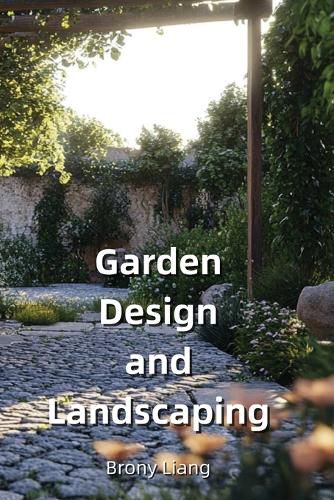Readings Newsletter
Become a Readings Member to make your shopping experience even easier.
Sign in or sign up for free!
You’re not far away from qualifying for FREE standard shipping within Australia
You’ve qualified for FREE standard shipping within Australia
The cart is loading…






This title is printed to order. This book may have been self-published. If so, we cannot guarantee the quality of the content. In the main most books will have gone through the editing process however some may not. We therefore suggest that you be aware of this before ordering this book. If in doubt check either the author or publisher’s details as we are unable to accept any returns unless they are faulty. Please contact us if you have any questions.
Garden Design and Landscaping
Garden design and landscaping are essential aspects of creating a visually appealing and functional outdoor space. Garden design involves the planning and arrangement of various elements, such as plants, pathways, water features, and furniture, to create a harmonious and aesthetically pleasing environment. Landscaping, on the other hand, refers to the physical implementation of the design, transforming the space by incorporating plants, soil, and structures. The goal is to blend natural beauty with functionality, enhancing the overall appeal of the garden while considering factors like climate, soil type, and the homeowner's preferences.
A well-designed garden not only adds beauty to a home but also provides a peaceful retreat and a space for recreation. The process begins with understanding the needs and desires of the client, including how they plan to use the garden. Some may prioritize a relaxing garden with seating areas and water features, while others may want a vegetable garden or space for entertaining. Plant selection plays a vital role, with different varieties chosen based on color, texture, size, and seasonality to create a garden that offers visual interest throughout the year.
Landscaping also focuses on the functionality and sustainability of the garden. Proper placement of trees, shrubs, and other plants can create shade, privacy, and shelter from the wind, making the space more comfortable. Hardscaping elements like patios, fences, and retaining walls are essential for structure and can significantly influence the overall design. A skilled landscaper will ensure that these features work together cohesively, balancing both aesthetic appeal and practicality. They may also integrate eco-friendly practices, such as the use of drought-tolerant plants or rainwater harvesting systems, to make the garden more sustainable.
In conclusion, garden design and landscaping are important for transforming outdoor spaces into functional, beautiful, and sustainable environments. The design process takes into account the preferences of the homeowner, the environmental factors, and the desired function of the space. Whether it's a peaceful retreat, a vibrant flower garden, or a low-maintenance landscape, careful planning and skilled landscaping work can turn an ordinary garden into an extraordinary outdoor sanctuary.
$9.00 standard shipping within Australia
FREE standard shipping within Australia for orders over $100.00
Express & International shipping calculated at checkout
This title is printed to order. This book may have been self-published. If so, we cannot guarantee the quality of the content. In the main most books will have gone through the editing process however some may not. We therefore suggest that you be aware of this before ordering this book. If in doubt check either the author or publisher’s details as we are unable to accept any returns unless they are faulty. Please contact us if you have any questions.
Garden Design and Landscaping
Garden design and landscaping are essential aspects of creating a visually appealing and functional outdoor space. Garden design involves the planning and arrangement of various elements, such as plants, pathways, water features, and furniture, to create a harmonious and aesthetically pleasing environment. Landscaping, on the other hand, refers to the physical implementation of the design, transforming the space by incorporating plants, soil, and structures. The goal is to blend natural beauty with functionality, enhancing the overall appeal of the garden while considering factors like climate, soil type, and the homeowner's preferences.
A well-designed garden not only adds beauty to a home but also provides a peaceful retreat and a space for recreation. The process begins with understanding the needs and desires of the client, including how they plan to use the garden. Some may prioritize a relaxing garden with seating areas and water features, while others may want a vegetable garden or space for entertaining. Plant selection plays a vital role, with different varieties chosen based on color, texture, size, and seasonality to create a garden that offers visual interest throughout the year.
Landscaping also focuses on the functionality and sustainability of the garden. Proper placement of trees, shrubs, and other plants can create shade, privacy, and shelter from the wind, making the space more comfortable. Hardscaping elements like patios, fences, and retaining walls are essential for structure and can significantly influence the overall design. A skilled landscaper will ensure that these features work together cohesively, balancing both aesthetic appeal and practicality. They may also integrate eco-friendly practices, such as the use of drought-tolerant plants or rainwater harvesting systems, to make the garden more sustainable.
In conclusion, garden design and landscaping are important for transforming outdoor spaces into functional, beautiful, and sustainable environments. The design process takes into account the preferences of the homeowner, the environmental factors, and the desired function of the space. Whether it's a peaceful retreat, a vibrant flower garden, or a low-maintenance landscape, careful planning and skilled landscaping work can turn an ordinary garden into an extraordinary outdoor sanctuary.